Blepharoplasty | Eyelid Surgery
December- Special
37 years experience in Eyelid Surgery
Blepharoplasty | Eyelid Surgery
December- Special
37 years experience in Eyelid Surgery
Blepharoplasty | Eyelid Surgery
December- Special
37 years experience in Eyelid Surgery
Blepharoplasty | Eyelid Surgery
December- Special
37 years experience in Eyelid Surgery
Blepharoplasty | Eyelid Surgery
December- Special
$1019*
* Additional fees for general anesthesia, operating room
FREE CONSULTATION
Your custom EYE SURGERY: A YOUNGER LOOKING YOU
Board Certified Surgeon with 37 yrs. Experience
With aging, the upper eyelids can develop sagging skin, extra fatty tissue, and weaker muscles. This may cause the eyelids to feel heavy and droop, sometimes to the extent of affecting vision. Upper blepharoplasty addresses this by removing surplus skin and tissue from the upper eyelid, opening up the eye and creating a rejuvenated look. If the eyelid margin itself is sagging, the procedure can also reinforce the surrounding ligaments.
Upper blepharoplasty is suitable for individuals with loose skin, weakened muscle, or excess fat around their upper eyelids. This type of eyelid surgery is effective for removing excess skin or fat that disrupts the natural eyelid contour, which can lead to both aesthetic and functional issues, like impaired vision. In cases where the eyelid margin droops—a condition known as ptosis—this can also be corrected as part of the procedure.
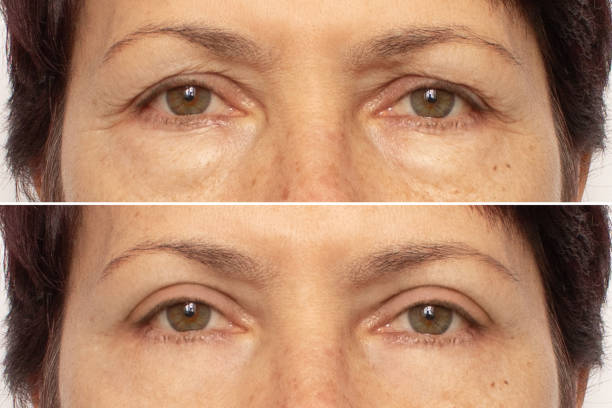
The procedure involves making a small incision in the natural crease of the upper eyelid, through which excess skin, muscle, and sometimes fat are removed. Muscles may be adjusted before lifting and reattaching the skin. The incision is concealed within the eyelid’s crease, so any scarring is minimally visible once healing is complete. The surgery typically takes 45-60 minutes and can often be performed with local anesthesia.
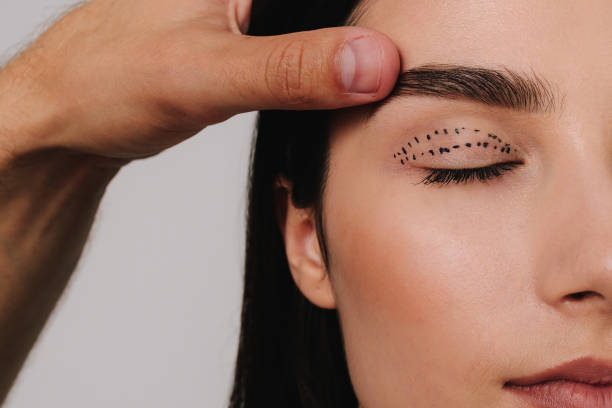
Costs for upper blepharoplasty generally range from $3,000 to $5,000, though this can vary. If drooping eyelids are affecting vision, some insurance plans may partially or fully cover the procedure.
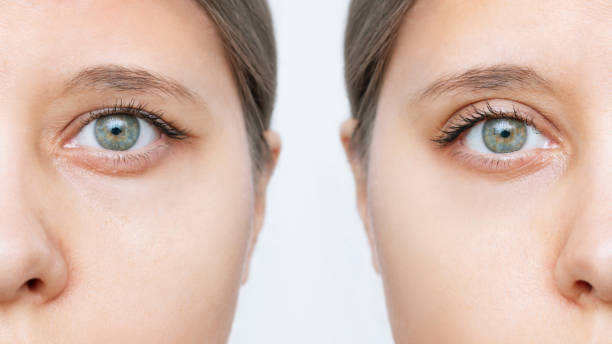
As we age, the lower eyelids can sag and form pockets that create shadows, giving the appearance of dark circles. Fat or fluid may accumulate, causing puffiness. Lower blepharoplasty, or “eye bag surgery,” can address sagging skin, wrinkles, and puffiness in the under-eye area.
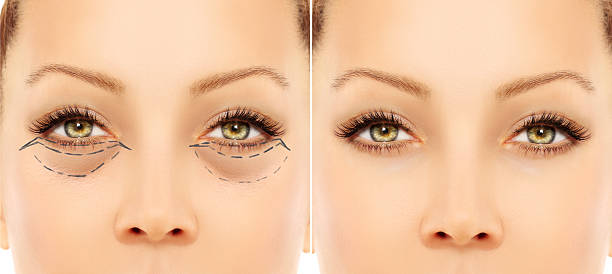
Lower blepharoplasty is ideal for those with loose skin, extra fat, or sagging under the eyes. This surgery can address eye bags, puffiness, dark circles, wrinkles, and excessive drooping that may reveal more of the whites of the eyes.
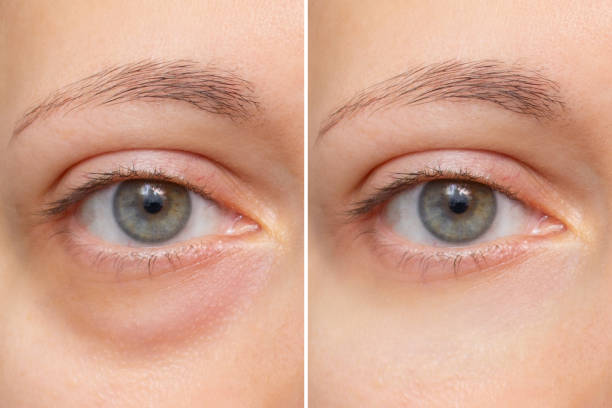
In the external approach, an incision is made just below the lashes. Excess fat and skin are removed, and hollow areas can be filled by repositioning fat or lifting the cheek area. The lower eyelid can also be tightened if needed for added support.
In the transconjunctival approach, an incision is made inside the eyelid, allowing direct fat removal or repositioning. This approach is generally preferred for younger patients or those with strong eyelid support structures.
Lower blepharoplasty is somewhat more complex than upper blepharoplasty, typically taking 60-90 minutes.
The cost of lower blepharoplasty varies, typically between $3,000 and $6,000. As it usually addresses cosmetic concerns rather than vision impairment, insurance generally does not cover it.
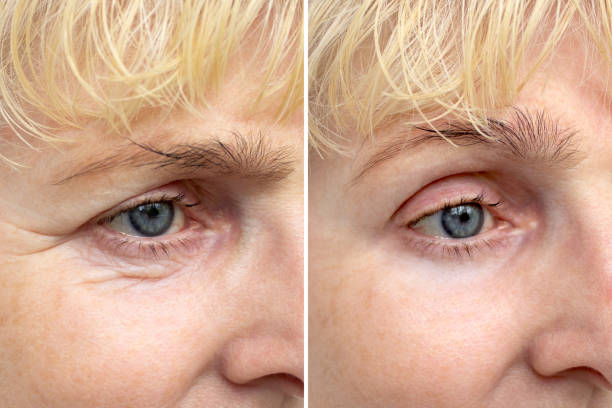
Quad Blepharoplasty:
Combining Upper and Lower Blepharoplasty Aging affects everyone’s eye area differently. While some achieve the desired look with upper or lower blepharoplasty alone, others may benefit from quad blepharoplasty, which combines both procedures. This approach provides a comprehensive rejuvenation of both the upper and lower eyelids.EYELID SURGERY | BLEPHAROPLASTY OUR SPECIALITY
How Much Does Blepharoplasty Cost?
Given our competitive special Eyelid surgery pricing and our doctor’s 37 years of plastic surgery expertise and being a leading plastic surgeon, it’s easy to see why patients travel to us from across the United States for their Eyelid surgery.
Your Custom Eye Surgery : A Younger Looking You
Rejuvenate Your Facial Appearance
A combination of wrinkles, sagging skin, frown lines, and excess fat around the eyes can limit your natural facial expressions. Even if you feel energetic and refreshed, these changes might convey a sense of fatigue or dissatisfaction. However, you can enhance your appearance and regain confidence through an eyelid lift, also known as blepharoplasty. This procedure focuses on the eye area, reducing signs of aging to create a more youthful, rejuvenated look
- Remove excess skin and fat from the upper and/or lower lids.
- Tighten the eyelid skin and muscles.
- Improve to the appearance of undereye puffiness.
- Smooth wrinkles around the eyelids.
- Redistribute displaced fat.
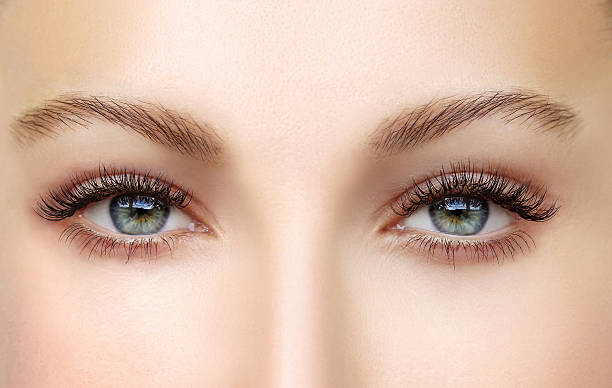
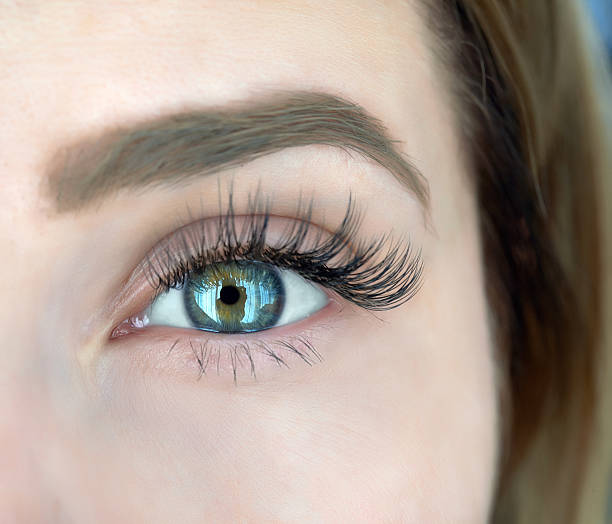
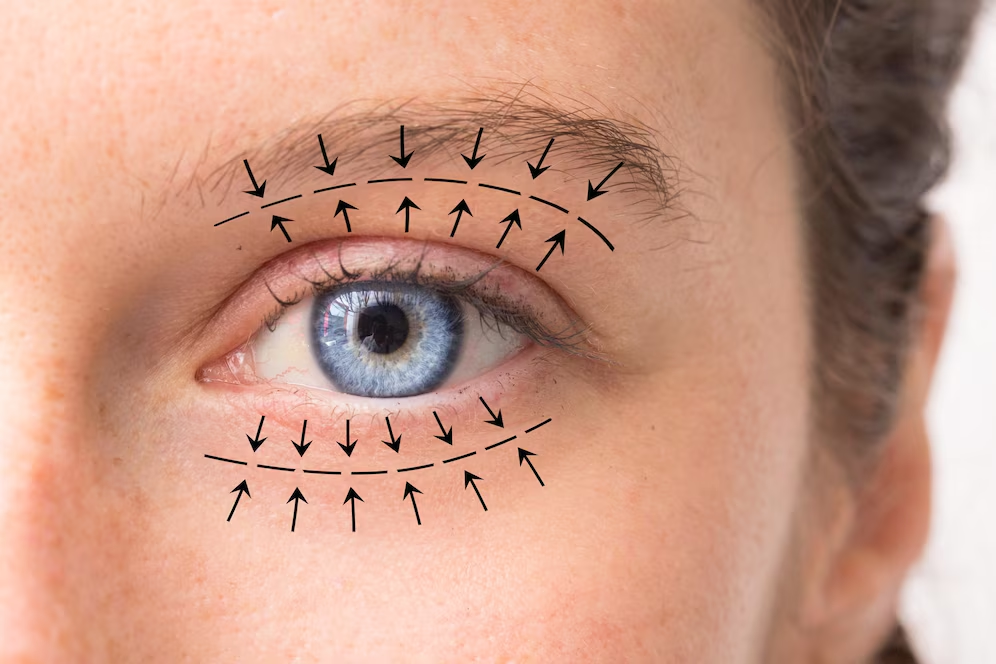
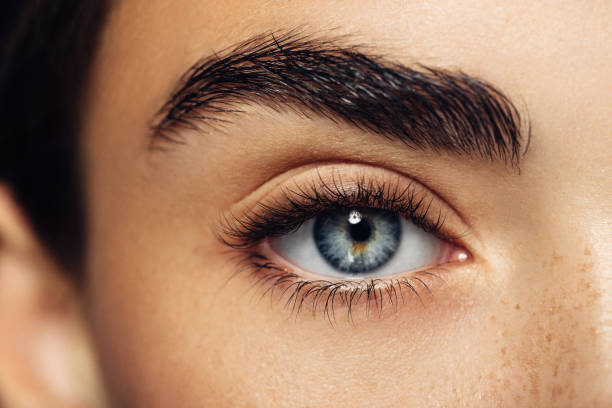
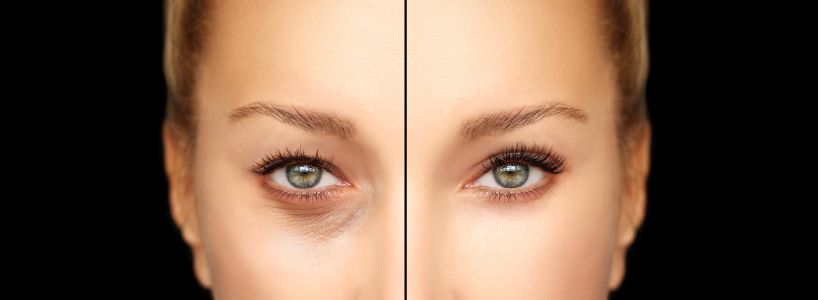
The Ideal Eyes is a Natural-Looking Eyes
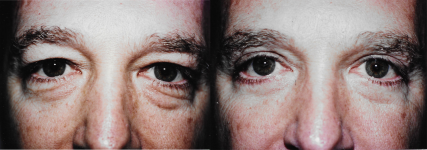

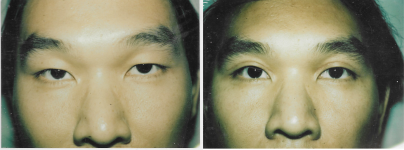




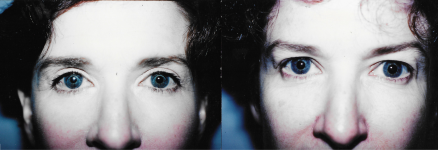

Free Consultation Request Form
Important notice: We will NOT share your email addresses and other personal information with any companies.
By entering your name, email and telephone number and clicking the “Submit” button above you hereby consent to receiving telephonic, sms text, email communication.
WHY CHOOSE DR. RAJA SROUR, MD, EYELID SURGERY?
- When selecting a surgeon for your blepharoplasty procedure, it’s important to choose someone with extensive experience and specialized expertise. Dr. Raja Srour is a board-certified Plastic surgeon, highly skilled in both cosmetic and reconstructive surgeries of the face
- With years of experience in performing blepharoplasty, Dr. Srour is known for delivering personalized and compassionate care. She utilizes advanced techniques and the latest technology to achieve optimal results for her patients.
- If you're considering blepharoplasty to enhance your appearance and improve your well-being, Raja Srour MD Facial Plastic Surgery is here to assist you. With Dr. Srour’s expertise, you can feel confident in receiving high-quality care tailored to your needs.
We accept the following payment:
- Out of town Patients came from anywhere in the world predominant our patients for tubal reversal procedure came from USA and Canada. [For more info click here]

Financing
Candidates for Eyelid Surgery
YOUR CUSTOM EYE SURGERY: A YOUNGER-LOOKING YOU. Blepharoplasty, commonly called eyelid surgery, is a cosmetic procedure that adjusts the shape of the eyelids and restores a bright, youthful eye appearance. You may be considering eyelid surgery to address saggy, droopy eyelids, or heavy bags beneath your eyes. The procedure involves removing excess saggy skin with an incision made in the eyelid fold. For results that appear natural and refreshed, not wide-eyed, this surgery requires a highly skilled surgeon.
Why do people get Eyelid Surgery?
- Remove excess skin and fat from the upper and/or lower lids.
- Tighten the eyelid skin and muscles.
- Improve to the appearance of undereye puffiness.
- Smooth wrinkles around the eyelids.
- Redistribute displaced fat.
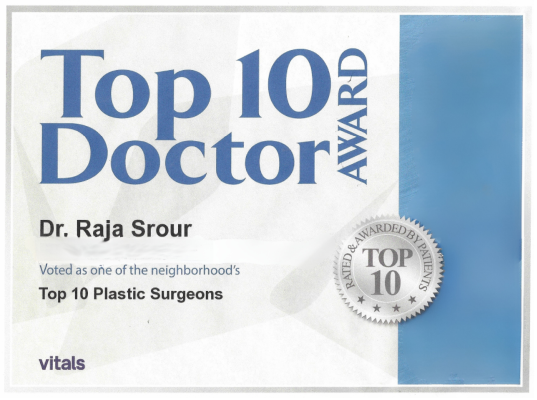
What are the different types of Eyelid Surgery?
1. Upper Eyelid Surgery aims to enhance the appearance of the eyes by removing excess or sagging skin that leads to folds and puffiness in the upper lids, as well as any excess fatty tissue.
2. Lower Eyelid Surgery focuses on eliminating fat pads in the lower eyelids that create under-eye “bags” and tightening any loose, excess skin.
Is Eyelid Surgery Right for Me?
The eyelid skin is very delicate and fine. As the years pass, the skin structure weakens, allowing the skin to stretch and sag. This condition is impossible to hide, and even when using the most expensive eye creams to keep the skin supple, your eyelid skin will eventually begin to sag. Many people take advantage of the ability to restore a more youthful look with eyelid surgery, which has the following benefits:
- Restores a youthful shape to the eye
- Removes excess sagging skin
- Can remove undereye bags
- Gives you a more open, approachable, youthful look
- Easy recovery
What Can I Expect During the Recovery Period After Eyelid Surgery?
Patients who undergo Eyelid Surgery can typically return to their normal routines within 7 to 10 days. The recovery process is generally more manageable compared to other cosmetic procedures like facelifts or rhinoplasty, which often require longer downtime. Discomfort is usually mild and can be managed with over-the-counter pain medications. Our Doctor will provide detailed aftercare instructions, including guidelines on activity restrictions, incision care, and the expected healing timeline. To help reduce swelling and speed up recovery, it’s often recommended to sleep with the head slightly elevated and to wear bandages for the duration prescribed
Cosmetic Eyelid Surgery - FAQ
Following are some common questions asked by patients considering Blepharoplasty PROCDERE
What to expect at a surgery consultation?
Patients can expect to provide a detailed health history to their surgeon during the consultation. “I ask about their current complaints and also like to discuss their other medical problems, prior surgery, and family history,” clarifies our doctors.
How long is the Eyelid Surgery procedure?
Eyelid Surgery will take between one and two hours to complete. The length of time will depend on the extent of correction required.
When can I return to work after my Eyelid Surgery?
Patients generally feel well enough to return to work or school between seven and ten days after surgery. By this time, the majority of bruising and swelling will have diminished.
Is Eyelid Surgery painful?
While the surgery is generally painless, you might experience some swelling and bruising afterward. Most people feel comfortable going out in public within 10 to 14 days, though full recovery can take a few months. During your blepharoplasty recovery, using cold compresses and antibiotic ointment can help reduce swelling.
Will scarring be noticeable?
Due to the sensitive nature of the skin on your eyelids, it typically heals more quickly and efficiently compared to other parts of the body. Once the incisions from upper blepharoplasty have fully healed, any scars will generally be subtle and only noticeable to those who are specifically looking for them, and even then, primarily when your eyes are closed
How long will results last?
The duration of results can differ among patients, but typically, the effects of upper eyelid surgery last around 5 to 7 years, while the results of lower eyelid surgery are generally permanent. For upper eyelids, it’s common for the skin to start sagging again after several years.
Am i a good candidate for Eyelid Surgery?
You might be a good candidate for eyelid lift surgery if you have sagging or drooping eyelid skin that could also affect your vision, or if you experience puffiness, bags, or dark circles under your eyes. Additionally, if your eyes show signs of aging (note: drooping can be genetic and may happen in younger individuals), you may benefit from this procedure.
How long does it take to recover from eyelid surgery?
Eyelid surgery, also known as blepharoplasty, generally requires about 10 to 14 days for recovery before you feel comfortable going out in public, though complete healing can take several months. Here’s what to expect during the recovery process:
- Swelling and Bruising: Your eyelids may be swollen and bruised for 1 to 3 weeks.
- Scars: Scars from the surgical incisions can take months to fade.
- Redness: Any visible redness typically takes about six months to fully diminish.
- Stitches: If your incisions were closed with removable stitches, they will be removed within 5 to 10 days.
To help expedite your recovery, consider the following tips:
- Follow your doctor’s instructions for cleaning and caring for your eyes.
- Use cold compresses and antibiotic ointment to reduce swelling.
- Rest your eyes as much as possible.
- Avoid activities that may cause dry eyes, such as reading or watching TV.
- Have someone stay with you for at least the first 24 to 72 hours.
- Avoid lifting anything over 10 pounds.
Tips to Speed Up Recovery After Eyelid Surgery
- Plan for sufficient recovery time and make arrangements in advance, like pre-cooking meals, stocking the pantry, filling prescriptions, and arranging childcare if needed.
- Apply ice packs to your eyes as directed to help reduce swelling.
- Follow instructions for using prescription ointment to promote proper healing.
- Take any additional prescribed medications or eye drops on schedule..
- Wear sunglasses for a couple of weeks to protect your eyes from light, dust, and wind, as your eyes may be more sensitive.
- Take gentle, short walks to maintain circulation.
- Rest your eyes with regular naps, as they may tire more easily for a few weeks.
- Avoid wearing contact lenses for approximately two weeks or until your surgeon gives the okay.
- Refrain from wearing eye makeup or applying any non-prescribed products on your eyes for at least two weeks.
- Minimize eye strain during the first week by avoiding activities like reading, computer use, and watching TV—try listening to audiobooks or podcasts instead.
- Sleep as upright as possible, perhaps with pillows or in a recliner, to reduce swelling and fluid buildup.
- Avoid strenuous activities, including heavy lifting or vigorous exercise, for at least two weeks or until cleared by your surgeon
- Protect your eyes from UV radiation with sunglasses with UV 400 for 2 to 4 weeks.
Am I a candidate for upper blepharoplasty?
If you are experiencing any of the following conditions, you may be a good candidate for this customized surgical procedure:
- Hooded eyes
- Sagging eyelid skin
- You look tired, even when well rested
- Difficulty applying cosmetics due to excess eyelid skin
- Puffy upper eyelids
- Impaired peripheral vision due to sagging skin
Am I a candidate for lower blepharoplasty?
If you are living with any of the following aesthetic conditions on your lower eyelid region, you are likely an excellent candidate for lower eyelid surgery:
- Excessive wrinkling at the lower eyelids
- Bulges or under-eye bags
- Asymmetrical lower eyelids
- Dark circles
- Festoons (swollen mounds between lower lids and upper cheeks)
Client Testimonials
Hear What Our Clients Have to Say About Us
I’m very pleased with my eyelid result!
Dr. Srour is BEST cosmetic surgeon in Beverly Hills. His 30 years of experience has an eye for perfection did a great job for me. I feel more confident, prettier, younger looking and I’m definitely quite pleased with my results. I highly recommend Dr Srour. 5 stars!
Joy
Love my results I got eyelid surgery here and as an caucasian woman I was nervous but doctor gave me exactly what I wanted! It’s so natural and beautiful
Emma
Dr. Srour is a great plastic surgeon. I was debating getting blepharoplasty for at least the 6 years. I researched all over the place and had a few consultations with high end doctors. I set up an appointment and was immediately at ease with him. I am very happy with result.
Nataly
I had my eyelid surgery, a 3 months ago and everything from the consultation to the surgery went smoothly—no complaints at all! On the day of the procedure and afterward, I felt completely at ease. His staff was incredible too. I’ll definitely be returning for other procedures in the future! I am so happy I done it .
Nelly
Thank you for your team’s hard work and the wonderful job you did for my Blepharoplasty. It looks great and is recovering so quickly. Your professionalism and great staff really made the experience so much better. Thank you again for the wonderful job you done.
Jeniffer

